BILLIONAIRES DO WELL to play down their assets. If some random fat cat started showing off his or her Lamborghinis or $400,000 watches, I’d be among those bristling (if only to hide my envy). But the passage of time seems to take some of the sting away and I’m happy to goggle at the treasures amassed by others. Pierre Fabergé made lavish jewel-encrusted Easter eggs for the czars of Russia, but I can be happy that the craftsmanship has survived without dwelling on the miserable lives of the serfs in that feudal society. Ditto the amazing gold confections of Benvenuto Cellini, wrought in the courts of 16th-century Italy.
Marjorie Merriweather Post was heir to the significant Post cereal fortune, and she spent her money collecting and sometimes commissioning worthy objects. Her Washington DC home, Hillwood, is now a museum and garden estate where many of her treasures by Fabergé (czarist eggs and other baubles) and Cartier (commissioned jewelry and decorative objects) are on view. The newest exhibit, Natural Beauties: Exquisite Works of Minerals and Gems, will be on view until the beginning of 2021, in the hope that visitors will once again enjoy a firsthand look. In the meantime, here is a glimpse of objects that Post prized, all made out of stones and minerals. The pieces shown here were chosen by Hillwood’s chief curator and curator of this exhibit, Wilfried Zeiser, who also provided notes on the pieces.
—Nancy McKeon
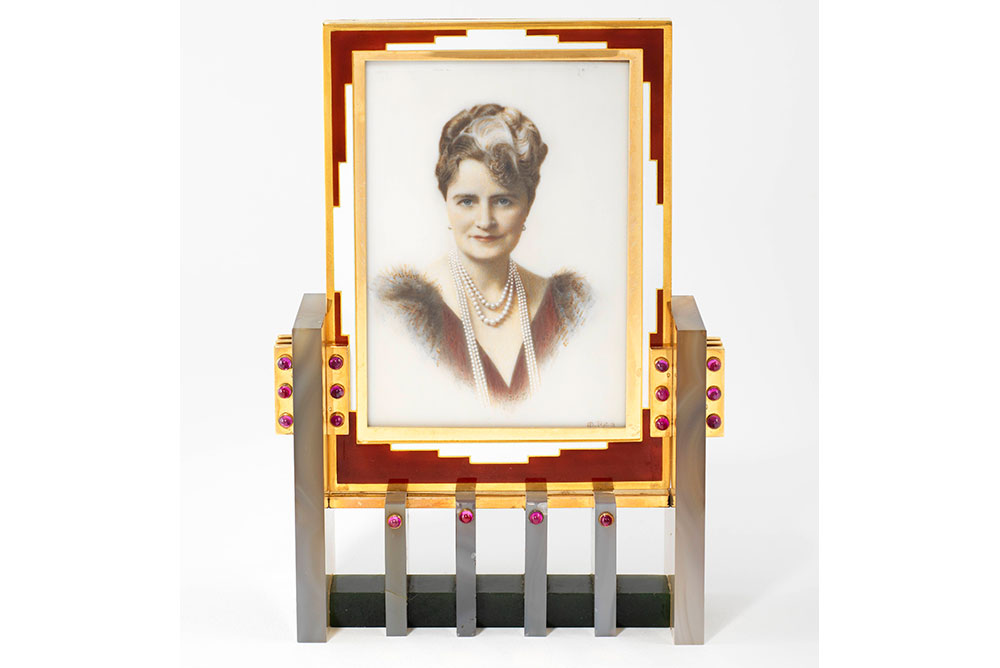
Photo courtesy of Hillwood Estate, Museum & Gardens.
This frame, with a photograph of Marjorie Merriweather Post, is by Cartier, of Paris, from about 1930. It is made of agate, gold, enamel and rubies. The watercolor on ivory is by miniature painter Malcolm Rae, American, active in the mid-1900s; made in New York, it dates from about 1930.
The French firm of Cartier opened a New York City branch in 1909 and quickly attracted a distinguished clientele. In addition to acquiring extraordinary pieces of jewelry from the firm, Marjorie Post also purchased exquisite objets d’art, such as frames, ashtrays, desk sets and bell pushes. Delicately crafted from agate, jade, lapis lazuli, nephrite and onyx, these items were often ornamented with enamel and precious stones. Together, these objects form a unique art deco collection. Post also patronized other jewelers known for their similar tastes.
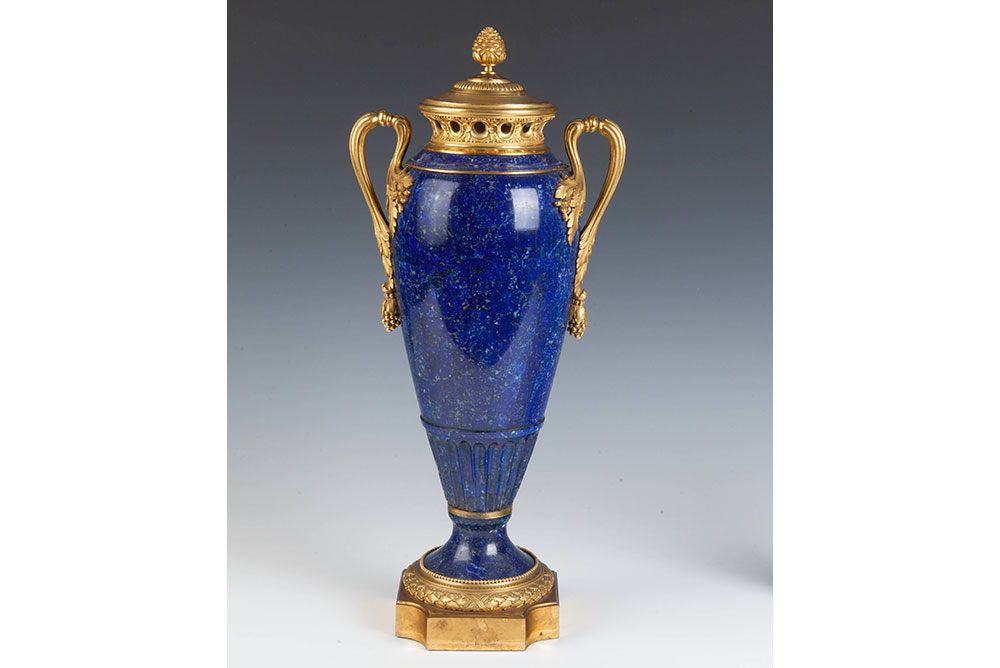
Photo courtesy of Hillwood Estate, Museum & Gardens.
Curator Wilfried Zeiser says Post purchased this 18th-century vase in Paris in 1937 while Marjorie Post was staying at the Ritz. Not much is known about the striking piece except that it is French and made of lapis lazuli and bronze.
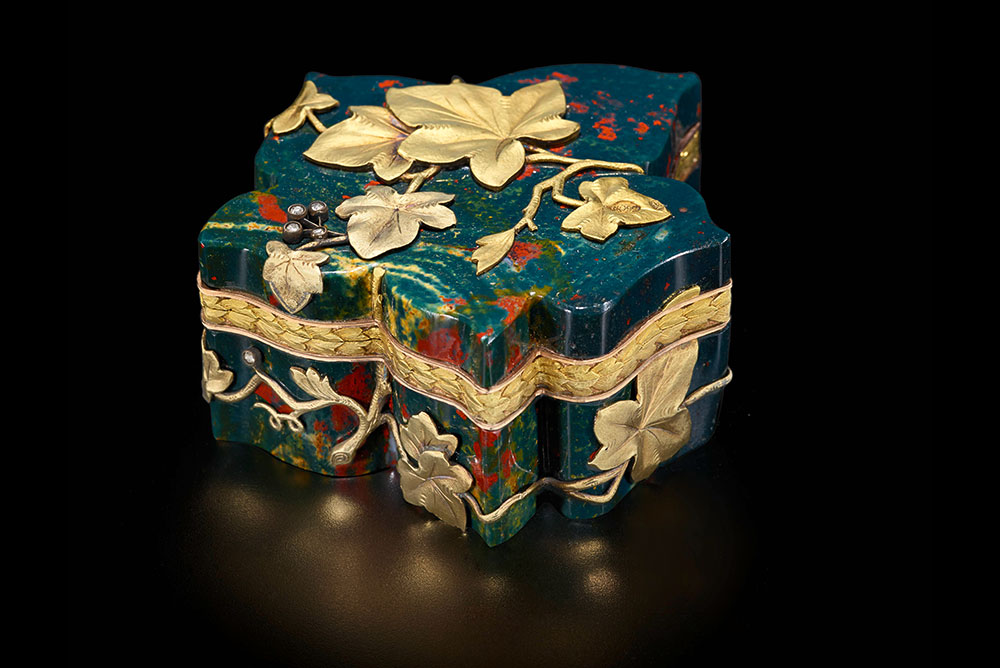
Photo courtesy of Hillwood Estate, Museum & Gardens.
This little leaf-shape box by the firm of Fabergé was made in Moscow between 1899 and 1908. It was fashioned from bloodstone, gold and diamonds. Bloodstone is an opaque dark green jasper with red inclusions resembling flecks of blood, hence the name. It was also Marjorie Post’s birthstone.
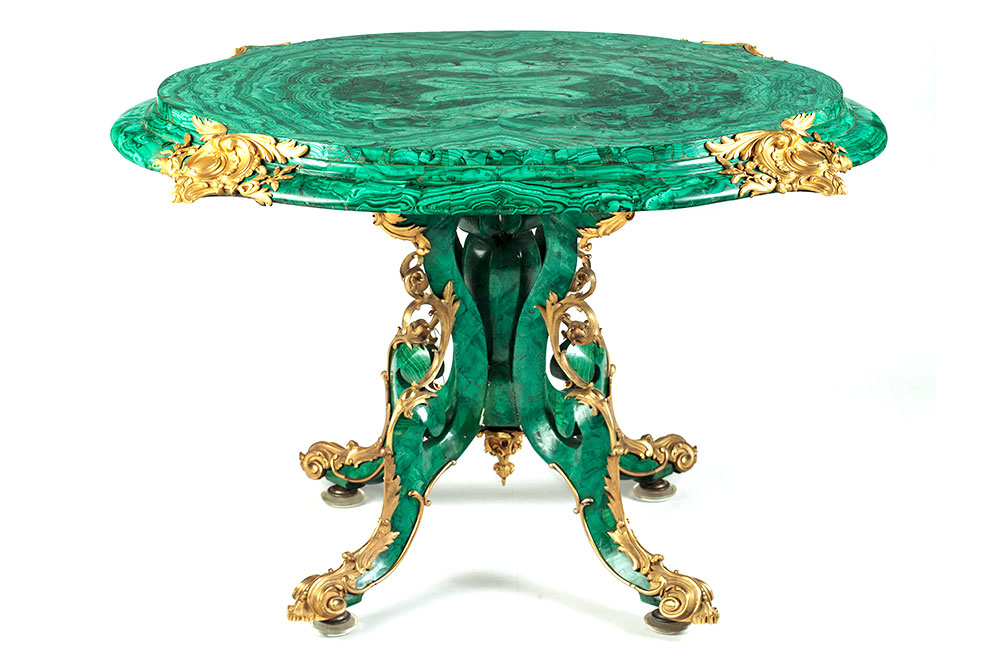
Photo courtesy of Hillwood Estate, Museum & Gardens.
This incredible table is made of malachite, the vivid green stone the Russians began mining in the Ural Mountains in the 1800s. This is the work of the Demidov Lapidary Factory, established by the Demidov family in St. Petersburg in the 1840s. The table was made there in about 1851 and includes gilt bronze work by the city’s Leuchtenberg Bronze Factory.
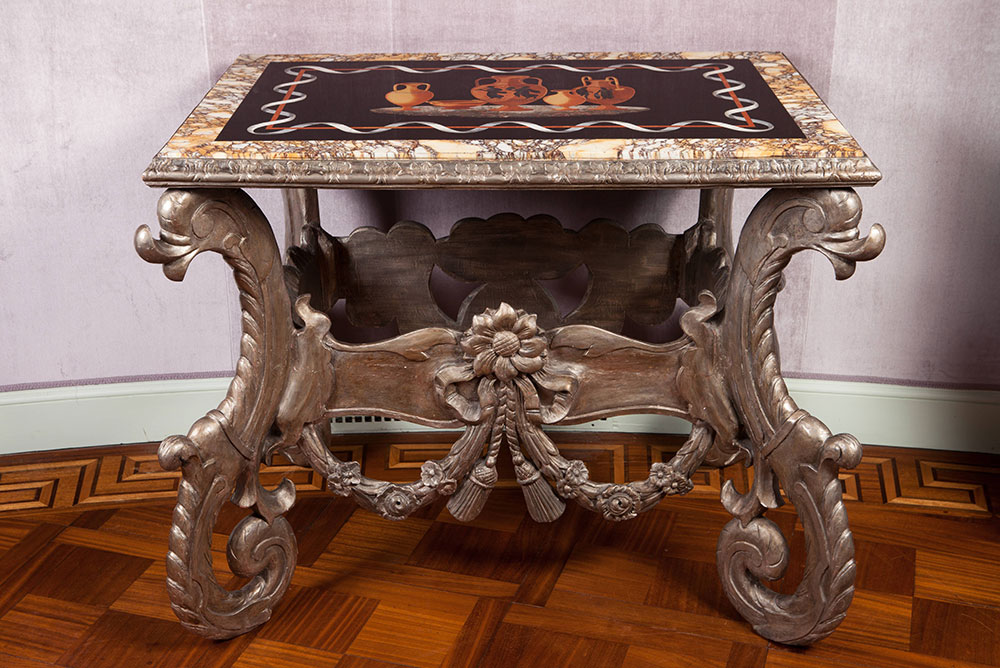
Photo courtesy of Hillwood Estate, Museum & Gardens.
This voluptuous table is an example of pietra dura, Italian for hard stone and usually used to denote the Italian design technique of piecing together polished stones of different colors on a marble field to create images. The table was made in Malta around 1850.
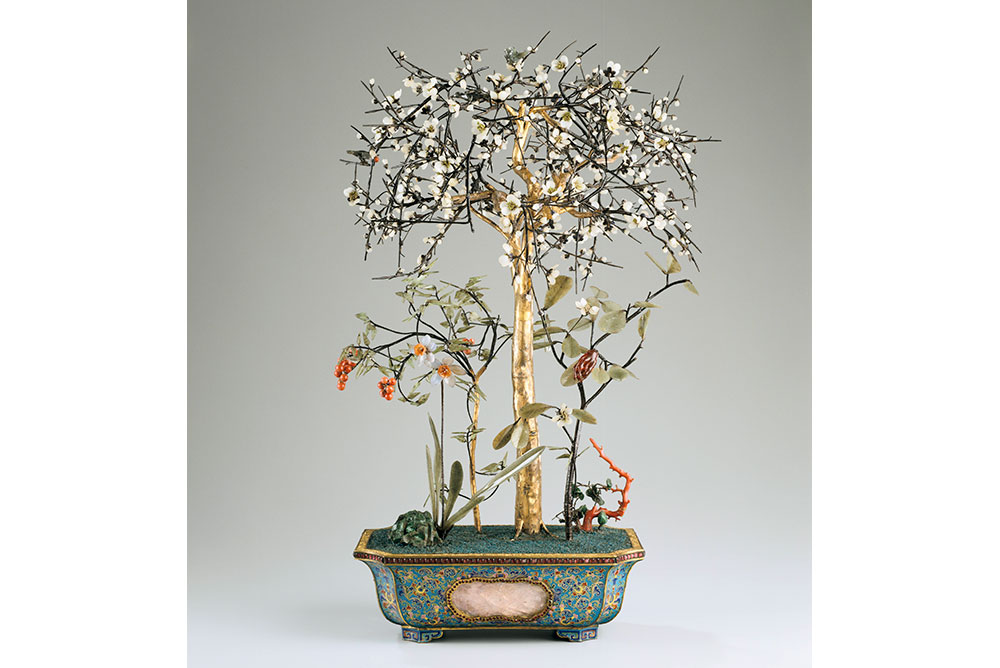
Photo courtesy of Hillwood Estate, Museum & Gardens.
Marjorie Post collected about 150 pieces of Chinese jade, in its many colors and fanciful forms, including religious figurines and snuff bottles. Shown here is a jardinière, or decorative flower box, showing trees and plants whose branches are just beginning to shake off winter. It was probably made in the imperial workshops of Beijing in 1790-95, out of gold, jade, enamel, stone, wood, coral and glass. Post established herself as a serious collector in New York in the 1910s.
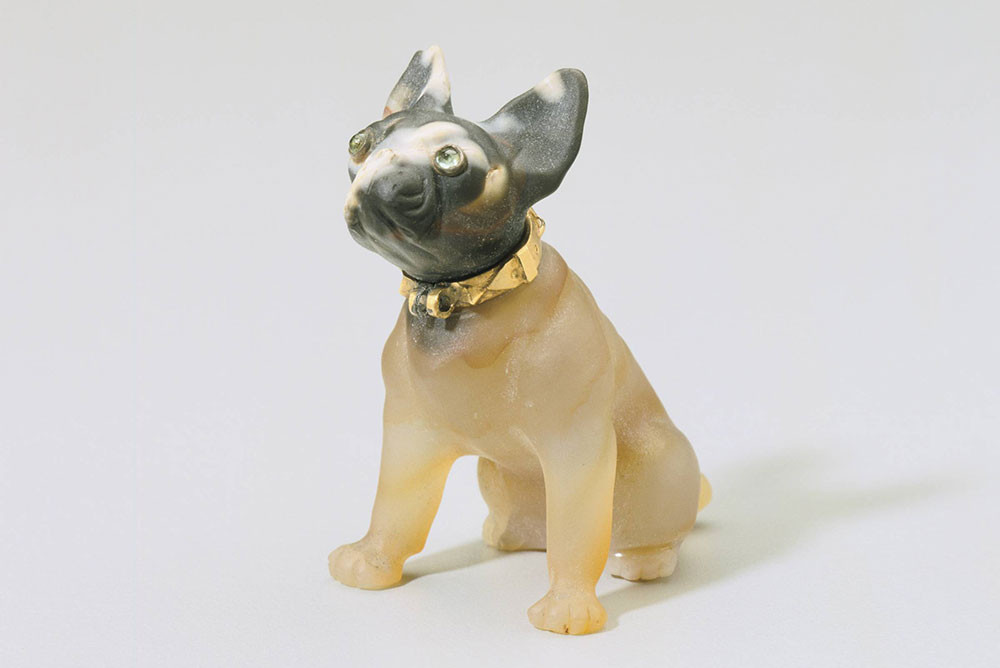
Photo courtesy of Hillwood Estate, Museum & Gardens.
One of the most popular breeds of dog, the French bulldog, inspired this miniature of agate, gold and enamels. It is Western European in origin, from the early 1900s.
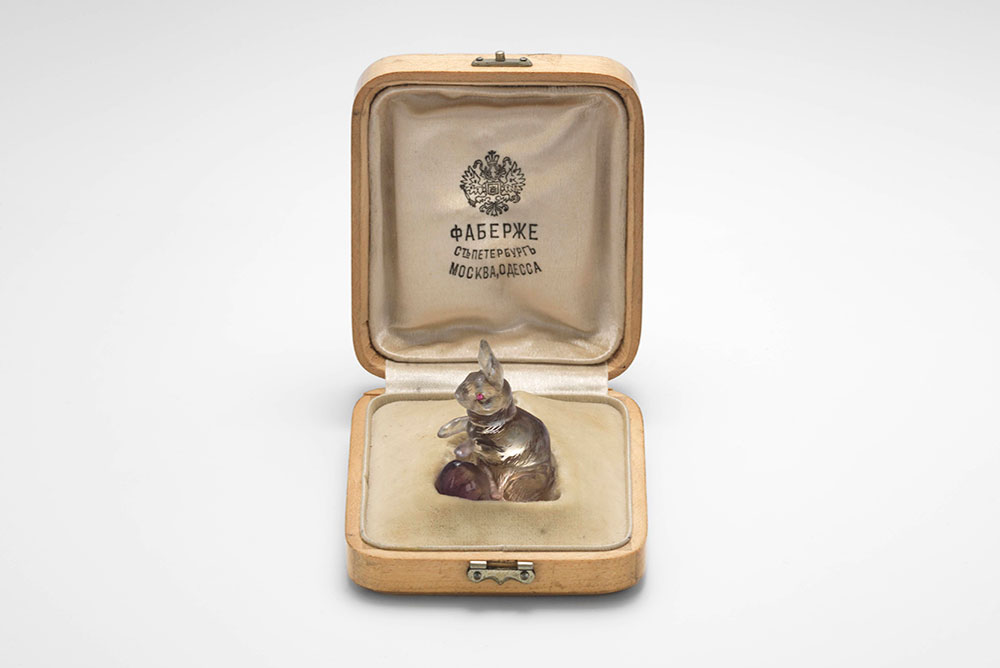
Photo courtesy of Hillwood Estate, Museum & Gardens.
This precious rabbit was made about 1900 and sold by the firm of Fabergé. It was fashioned from amethyst and has tiny ruby eyes.

Nancy,
I loved every word of this post. Those treasures were created by highly skilled artisans, and their gifts were not created to inspire envy, but rather, to inspire! Art transcends ego, and connects us to those deeper places we often don’t connect to otherwise. And I do agree that this pandemic, and the quiet place it forces us to find within, is a gift, as well. Otherwise, we might never slow down long enough to see the beauty – the art – that is all around us everywhere.
Thank you!